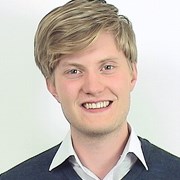Om

The program is based on an optimization formulation where complex hydraulic configurations of water courses can be modelled. The program is able to handle any number of cascaded water courses. The optimisation is based on successive linear programming and may include mixed integer or stochastic formulation. CPLEX is used as solver.
The general objective of the program is to utilize the available resources, and to maximize the profit within the period in consideration, by exploiting the options for buying and selling in the spot market, while fulfilling firm load obligations.
Study period/time resolution the study period is flexible, typically 7 to 14 days
the time resolution is flexible and may vary within the planning period (typically 1 hour or 15 minutes)
Modelling
The SHOP software includes all the main components such as reservoirs, hydro units, discharge gates, junctions, and thermal units. A firm load profile and a short-term market are also modelled.
The reservoirs are the main connecting elements of the water course. A reservoir can have a one ore more power plants and/or one or more discharge gates downstream. Two reservoirs may supply water to the same power plant via a junction, where the pressure balances decides distribution of water flow. The water flow in discharge gates may be decided by the optimization, be preset by the user or follow from water heads.
Head optimization and start up costs for hydro plants is modelled. A plant may be a power production plant, a pump plant or a combination thereof.
The power plant and the gates can have any destination downstream and can be given individual time delays. The endpoint reservoir level can be described by water values or specified endpoint volumes.
The hydro units are defined by any number of power-production/discharge-curves, reflecting different net plant heads. Linear interpolation is assumed at intermediate plant heads. Head loss in water tunnels are modelled.
The discharge gates can be defined by tables where the release is defined as a function of upstream reservoir level and gate position.
Thermal units are given a quadratic approximation to the operation cost between minimum and maximum power production. The commitment status of a thermal unit is assumed known in advance for all time intervals.
Operational constraints
Examples of operational constraints included in the SHOP software:
- maximum rate of change on quantities connected to production units, plants, reservoirs and gates (time-dependent)
- minimum and maximum values on production, reservoirs, gates (time-dependent)
- schedules in any user-defined intervals on production, reservoirs and gates
- minimum or maximum reservoir levels for witch a generator or pump is allowed to run
Results
The results from the software are given as time series including:
- Reservoir trajectories
- Power production or consumption (hydro units, thermal units)
- Discharge through plants and gates
- Incremental costs
- Trade in power market

